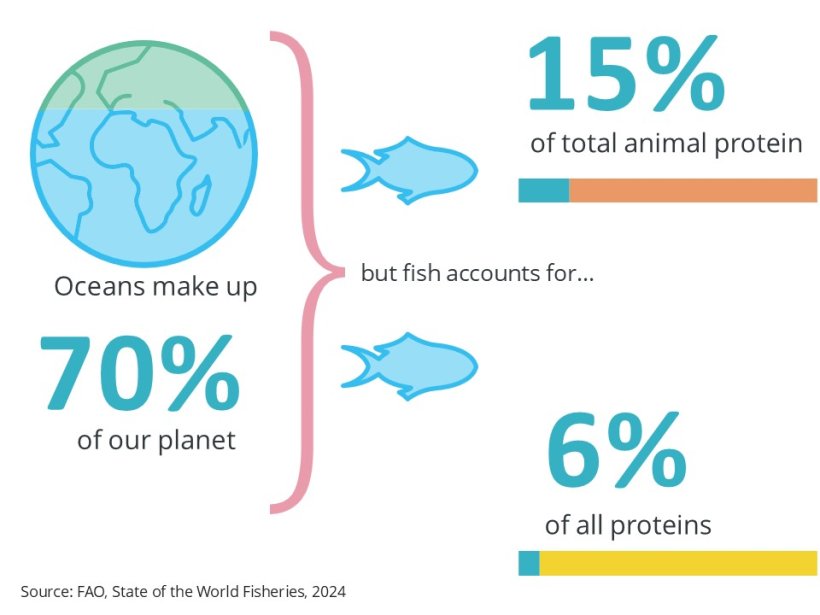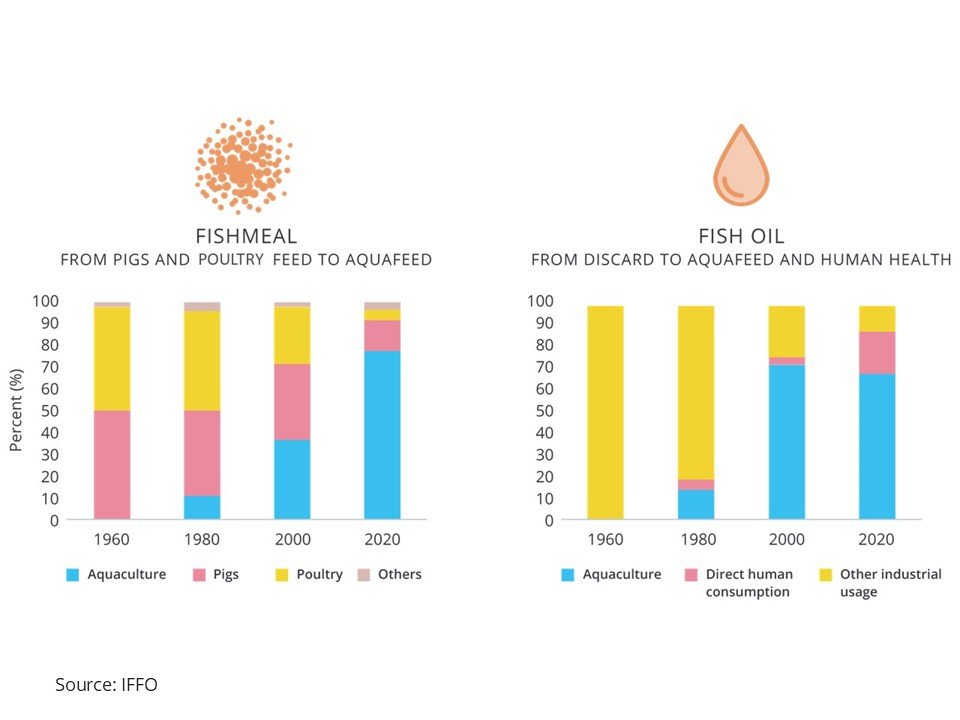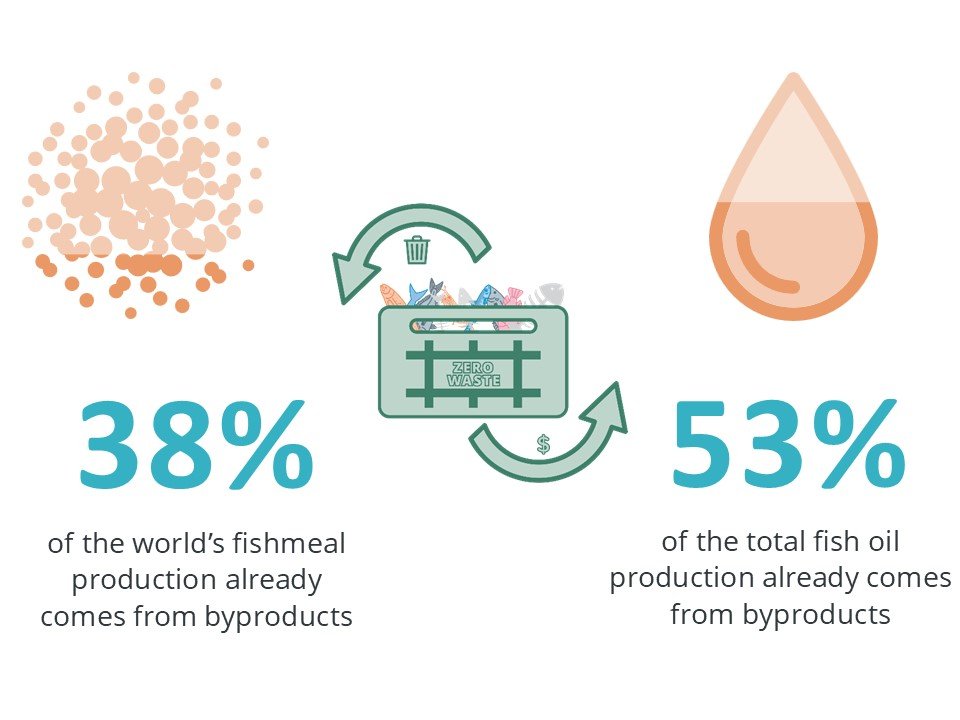
The increase in demand for food supply will present a growing challenge in the next two decades, considering the increase in global population. The FAO 2024 report on the State of Food Security projected that 582 million people will be chronically undernourished at the end of the decade, more than half of them in Africa.
Fish consumption contributes to a nutritious healthy diet, with its high protein content containing all essential amino acids, essential fats (such as the long chain omega-3 fatty acids), vitamins and minerals. In 2021, fish consumption accounted for 15% of the global population’s intake of animal proteins, and 5% of all proteins consumed.

The growing role of aquaculture
The growth in aquaculture contributes towards the global supply of nutritious food, and fish protein is a crucial component in the diets of densely populated countries.
While global fish production is expected to keep increasing (+12% over the 2023-2032 period), the rate of growth is expected to be substantially lower than the 22% increase achieved over the previous decade, according to the OECD-FAO Agricultural Outlook 2023-2032. As highlighted in the FAO's 2024 State of the World fisheries and aquaculture, global fisheries and aquaculture production in 2022 surged to 223.2 million tonnes. The contribution of world aquaculture to global fish production reached 51% in 2022, up from 25.7% in 2000. The production growth in aquaculture can be attributed to increased productivity and technological progress, while production in capture fisheries has levelled off since mid-1980s.

About 89% of world fishery production is estimated to be used for direct human consumption.
Increased fish production from aquaculture has boosted fish consumption. Apparent food fish consumption per capita is expected to increase in all continents except Africa, the region with the fastest growing population. By 2032, apparent food fish consumption is projected to reach 21.2 kg per capita globally – up from 20.4 kg in the base period (average 2020-2022) and an average of 9.9kg in the 1960s.
Fishmeal and fish oil are the foundations of modern fed aquaculture
Early feeds had a very high inclusion of marine ingredients, which by meeting the nutritional needs of the early farmed species allowed the industry to develop. Aquaculture has been the fastest growing protein sector for several decades and, as it has grown over time, feed composition has altered as a reflection of finite availability of the materials. Rather than the commodities that they were regarded as in the early days, fishmeal and fish oil are now seen as strategic ingredients, their use in feeds varying proportionately with the nutritional advantage they may be able to confer at key life cycle stages in production (e.g. hatcheries, broodstock).
A large proportion of fishmeal and fish oil is used in animal feed and the distribution as feed by market can be seen below.

Most fish harvested and used directly for fishmeal and fish oil production are the high abundance small pelagic species. According to FAO (FishStat) data, in 2022, there was about 26 million tonnes of those small pelagic species landed around the world from various fisheries. In that same year the FAO estimates that about 17 million tonnes of that fish was used for fishmeal and fish oil production. That leaves around 9 million tonnes, about one third of the capture, as what was directly consumed.
Canning or freezing are well-established means to extend a product’s shelf life, enabling it to be traded worldwide as is the case for 38% of all seafood. But what happens when infrastructure for freezing or canning is missing, or when the fish is not suitable for direct human consumption anymore because of a prolonged stay on the vessels? These materials can be stabilised in order to not become waste and the more straightforward, natural way to do this is to ground them and transform them into fishmeal. Equipment onboard vessels is developing at a fast pace, allowing for more circularity to be applied to marine products.

Source: IFFO, 2023
Fishmeal has become a speciality ingredient in animal feed because of its high protein level and amino acid composition as well as presence of valuable minerals and vitamins. Fishmeal and fish oil production from capture fish is relatively stable (it can be less or more depending on weather and natural conditions) but an increase is foreseen by 2032 and can mainly be attributed to larger volumes of by-products coming from the processing of fish. In turn supporting the development of the aquaculture sector...









